Nearsighted vs Farsighted
Being nearsighted or farsighted are both common visual problems the majority of people have. We encounter many patients both in-office and onsite that are either nearsighted or farsighted. Being nearsighted means you can easily see objects from a close distance, but seeing objects at a far distance is difficult and blurry. Meanwhile, being farsighted means you have difficulty seeing objects from a close distance, and objects at a far distance are easier to see and clear. In this article, we are going to cover the difference between nearsightedness and farsightedness. As well as how it can be treated and options.
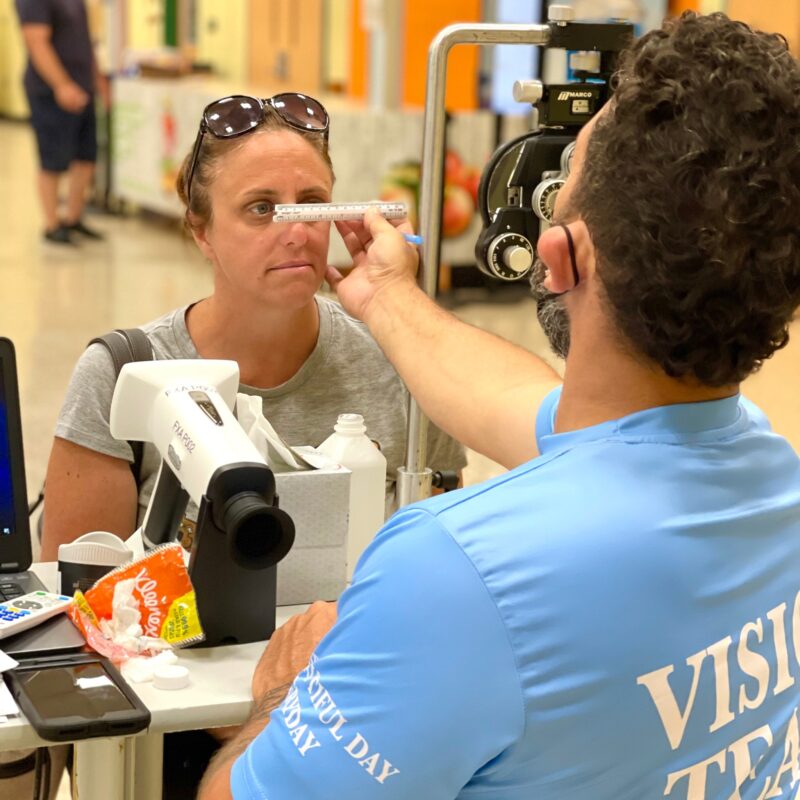
How vision works in your eyes
When it comes to vision, multiple different parts of the eye work together. It first starts with light passing through the cornea which is the clear front layer of the eye. The cornea bends the light to help the eye focus. The cornea is located on top of the iris. The iris controls how much light the pupils let in. When the light passes through the lens it works together with the cornea to help focus it correctly to the retina. When the retina receives light it transfers the information to optic nerves that are sent to your brain. Finally, the brain uses this information and transforms it into images.

Nearsighted
As mentioned before, being nearsighted means that you can see objects at a close range, but have trouble seeing them at a far range.
Causes
The official term for nearsightedness is myopia. Myopia is the result of having the eyeball too long. Nearsightedness is a common refractive error. Refractive error means having an abnormal size or shape to your eyes that make it difficult for light to focus in your retina. Due to this, light rays that hit your eye will focus on the front of the retina instead of directly at the retina. This results in making objects blurry at a further range.
Symptoms
The main symptom of being nearsighted is trouble seeing objects at a far range. A good example is seeing signs when driving. Having to focus on something that you have trouble seeing puts strain on your eyes. This results in having headaches, squinting, and eye fatigue throughout your day.
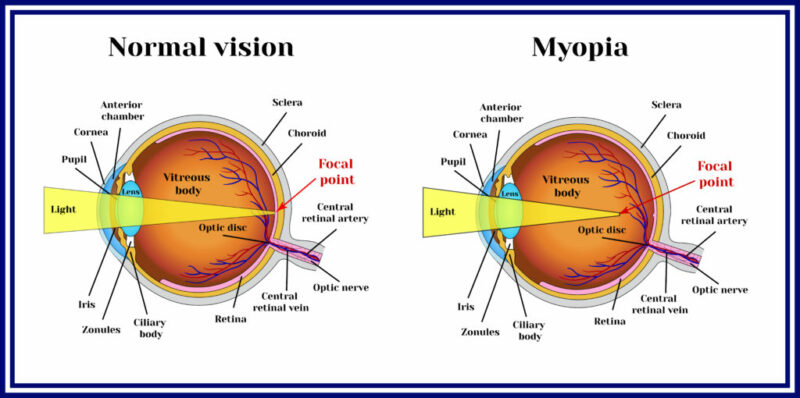
Farsighted
Being farsighted means that you can see objects at a far range, but have trouble seeing objects at a close range.
Causes
The official term for farsightedness is hyperopia. Hyperopia is the result of having the eyeball too short, or your cornea being flat. This makes light focus at a further point beyond the retina instead of in front or directly at the retina. The cornea is responsible for refracting incoming light into the retina. So the shape of the retina influences your vision. Once the retina receives light it transfers to the optic nerve which carries information to the brain.
Symptoms
A symptom of hyperopia is trouble reading. This can lead to headaches when trying to read, squinting, and eye strain.
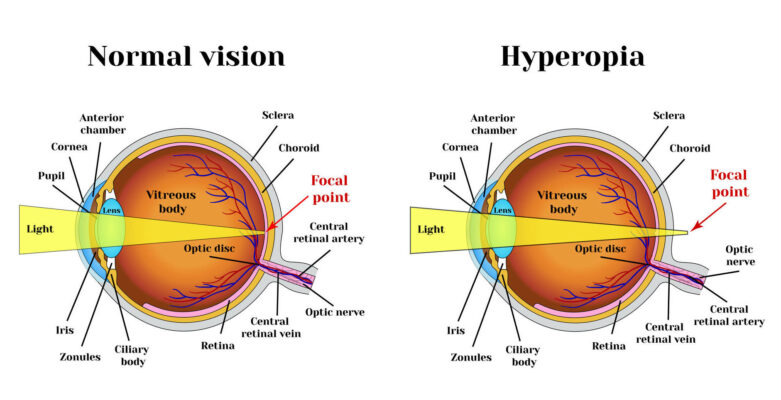
How are they diagnosed?
If you are experiencing blurry vision or have trouble with your eyes, schedule a visit with us or any eye care professional.
Nearsightedness
Nearsightedness is diagnosed with an eye exam. The eye exam would involve a refraction assessment. A refraction assessment would be able to identify if you have any visual problems such as nearsightedness, farsightedness, astigmatism, or presbyopia. Your doctor may use various instruments when performing your eye exam and use droplets to dilate your eyes. Eye dilation assists your doctor with wider views inside of your eyes.
Farsightedness
Farsightedness is also diagnosed with an eye exam. Most of these visual problems can be diagnosed with a comprehensive eye exam or a visual acuity test.
How to treat your hyperopia or myopia
It’s important to first know if you have hyperopia or myopia by receiving an eye exam. We diagnose a lot of our patients both in-office and during our mobile eye care onsite events that are either nearsighted or farsighted. A solution to this is to wear corrective lenses or glasses. Contact us today to get an eye exam!
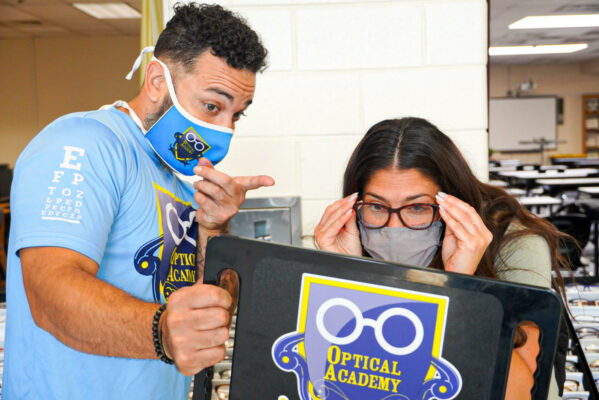
How to prevent visual impairment
Visual impairment can be inherited, but there are ways to limit the risk of hyperopia and myopia.
- Having a healthy diet
- Staying physically active / working out
- Giving your eyes rest
- Wearing sunglasses
- Quit smoking
Conclusion
Being nearsighted means being able to see objects close and having trouble seeing objects that are far. While being farsighted is the complete opposite. It’s important to have eye exams to make sure you don’t have any visual impairment or health risks. It’s also important to eat healthily and be physically active to promote and maintain good eye health.
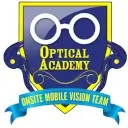

Worksite
All Employees Served With Direct Vision Care All In One Day At Their Worksite!.
Glasses2Classes
Vision screenings, eye exams, and eyewear for all students at their schools!
Community Events
Provide Easy Access To Eye Care & Eyewear for Your Entire Community!
At Home
Skip the trip! We travel directly to all fragile homebound patients!